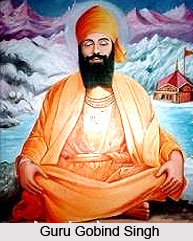 Concept of Universal Human Hood in fact has been a part of the teachings of all the ten Sikh Gurus. Post martyrdom of the ninth Guru the rate of conversion of Hindus and others into Islam increased. Guru Gobind Singh Ji wanted to do something constructive to stop Aurangzeb from committing extreme forms of atrocities. In order to meet this challenge a judicious and uncompromising ideology was required through which a united force could be raised. He introduced the idea of Dharam Yuddh which would draw people belonging to all faiths. It was resolute and universal in its approach.
Concept of Universal Human Hood in fact has been a part of the teachings of all the ten Sikh Gurus. Post martyrdom of the ninth Guru the rate of conversion of Hindus and others into Islam increased. Guru Gobind Singh Ji wanted to do something constructive to stop Aurangzeb from committing extreme forms of atrocities. In order to meet this challenge a judicious and uncompromising ideology was required through which a united force could be raised. He introduced the idea of Dharam Yuddh which would draw people belonging to all faiths. It was resolute and universal in its approach.
The very essential credentials of an `apostle` is the `divine call` behind his mission. This applies to Sri Guru Gobind Singh as according to his own testimony in Bachitra Nataka, the Akal Purakh has sent or given a call to him in order to spread dharma in the world. It is said that the objective of his coming to the world is dharma and the Lord has sent him for this purpose. This inspired Guru Gobind Singh to work uncompromisingly for his mission was his vision of `Universal Human hood`. This vision was as such common to all the ten Gurus.
The entire human kind should be recognised as one. Lord is creator, compassionate, source of food and generous. He has no dualism. It`s the duty of human beings to serve the one only. He is the only Guru of all. His vision of `Universal Human hood` is rooted in his vision of Akal Purakh. Lord has no physical appearance, nor any caste or sub-caste, features, complexion, garb cannot be described.
This article is a stub. You can enrich by adding more information to it. Send your Write Up to content@indianetzone.com




















